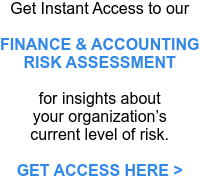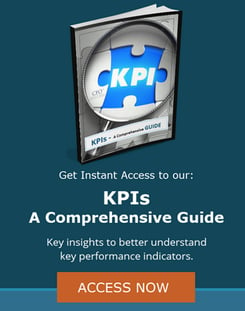
Have you ever had a conversation that went something like this?
CEO: “So, do you have an update on our insurance?”
CFO: “Well, I have good news and bad news.”
CEO: “Bad news first, please. Always.”
CFO: “I took a look at The Company’s coverages and talked with our broker. The bad news is that our insurance bill is going up, way up.”
CEO (interrupting): “By how much? We’re kind of tight right now.”
CFO: “The premium increase will be almost 40% over last year. We might want to shop it. But the good news is…”
CEO (interrupting again): “Let me guess - another invitation from the insurance broker to a charity golf event in the month of November?”
CFO: “Actually the good news is that this year we have identified some significant gaps in our coverage. We have the opportunity to close those gaps now to better protect The Company in the future from significant financial risk.”
CEO (looking unconvinced): “Oh?”
CFO: “With our new advisory board of directors, we will need D&O insurance. Also, the broker has been recommending cyber insurance for the last several years, but The Company continues to put off purchasing any kind of coverage in this area. I strongly recommend that we should cover ourselves in this area.”
This conversation highlights the types of difficult decisions that companies need to make everyday regarding their insurance coverage. And in the same way that our hypothetical CEO and CFO just approached the topic of buying into insurance coverage (one with a cost-concerned headache and one with an eager loss control mindset), insurance can also create a similar disconnect between financial personnel. For instance, Controllers and CFOs approach insurance conversations very differently as well.
Unlike CFOs, which are looking for ways to manage risk, controllers typically want to slash costs, causing them to ask questions like:
- How much could we save by increasing the deductible?
- Should we change brokers again?
- What coverage can we drop?
However, this thinking may only accomplish minimal cost saving and even worse may increase the company’s risk profile to unacceptable levels, which begs the question, “How much does insurance coverage contribute to the overall goal of managing organizational risk?”
Let’s take a look at the broader concept of risk management:
Types of Risk
Typically, CFOs are on the front lines of managing and minimizing risks directly. They oversee areas like:
- Customer credit (through setting and enforcing underwriting standards)
- Cash management (by designing and implementing the appropriate internal controls)
- Interest rate movements (through balance sheet asset liability management)
But what about operational risks that fall outside the CFO’s direct responsibility? Other risk areas include workplace safety, cyber risk, and corrupt vendor practices (just to name a few). Insurance can be a stopgap, but true risk management seeks to identify and mitigate the underlying source of risk. For this reason, a CFO will need to collaborate with operations and other functional leaders to address risk across all areas.
Areas of High-Risk
Bank Wire Controls
Many of my new client companies have overlooked the risk presented by bank wires. Wires are often the tool of choice for phishers and spoofers. By creating a false sense of urgency and co-opting company email systems, employees are fooled into wiring money to rogue companies. Unfortunately, employees are often able to wire unlimited amounts of money. One simple solution is to institute a daily wire limit, probably enough to accommodate regular payroll runs. Additionally, companies that have identified and closed this gap should have a hard conversation with their current bank to find out why an obvious risk wasn’t identified and resolved?
Workers’ Compensation
For many companies’ workers comp represents a significant expense, especially when the company has experienced a history of excessive claims. Years ago, I had a client that was paying a rate 40% higher than the industry average. Workplace injuries appeared to be occurring due to a lack of adequate training. The obvious solution was to implement revised safety training programs.
Customer and Supply Contracts
Private companies often participate in an industry ecosystem with large customers and suppliers. Many customers will require that the company use the customer's “standard” contract. These “one-sided” contracts may shift risk to the company, through indemnifications, hold harmless clauses, and other legal means. Companies can attempt to alter the contract or take their business elsewhere.
I had a client with a very different fact pattern: a highly fragmented ecosystem of customers where the company was able to write a contract that shifted the risk to the customer. The insurance broker and underwriter recognized that the company had a “best-in-class” contract and priced the policy accordingly.
Combining Risk Management with Reinsurance
“Self-insurance” is a framework that can be used by companies that want to actively manage risks in order to minimize their overall insurance spend. In actual practice, firms cover losses only up to a predefined maximum, after which reinsurance kicks in (often underwritten by Lloyd’s of London). Self-insurance has been successfully applied in employee benefits, where firms use wellness and preventive health programs to actively minimize health costs and avoid the cost spiral associated with traditional health care insurance premiums. Self-insurance techniques are now being applied to other insurable risks, including cyber risk, as well.
In summary, CFOs can best use insurance as a tool to respond to risks that cannot be fully mitigated operationally. CFOs should focus on closing gaps in coverage and reducing risks versus saving costs. Finally, CFOs and companies should choose an insurance broker that shares this risk management philosophy and will work together to reduce risk exposures and ultimately reduce insurance costs.
When you need strong financial leadership, reach out to us. At CFO Selections we provide best-in-class CFO consulting services and executive recruiting. We measure our success by the value we create for our clients, partnering with them through whatever their financial needs may be. Find out what our clients are saying about working with our highly experienced team.
About the Author
 Larry Breitbarth is an experienced financial executive with a proven track record in financial management, operational and strategic planning, performance improvement, corporate controllership, project management, and valuation consulting. He began his career as a business valuation consultant with Arthur Andersen in Chicago and served manufacturing and distribution clients in the automotive and food equipment sectors.
Larry Breitbarth is an experienced financial executive with a proven track record in financial management, operational and strategic planning, performance improvement, corporate controllership, project management, and valuation consulting. He began his career as a business valuation consultant with Arthur Andersen in Chicago and served manufacturing and distribution clients in the automotive and food equipment sectors.
Prior to joining CFO Selections, Larry held senior financial positions with a variety of companies in the technology and financial services industries. At multiple firms, he has been responsible for financial strategy, financial reporting, cash management, planning and analysis, and internal controls. As a senior financial executive, he has led numerous revenue enhancement strategies, cost savings initiatives, and risk mitigation projects.






